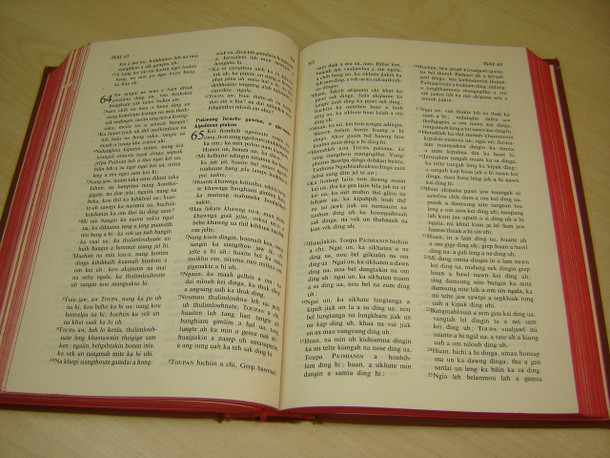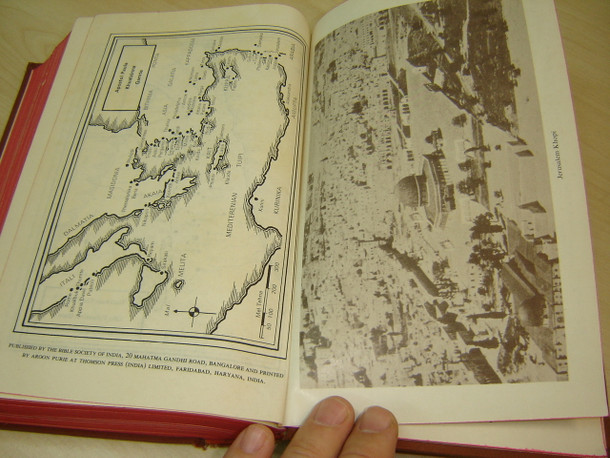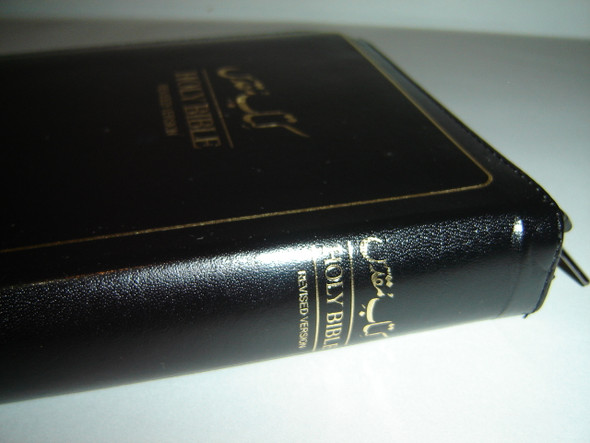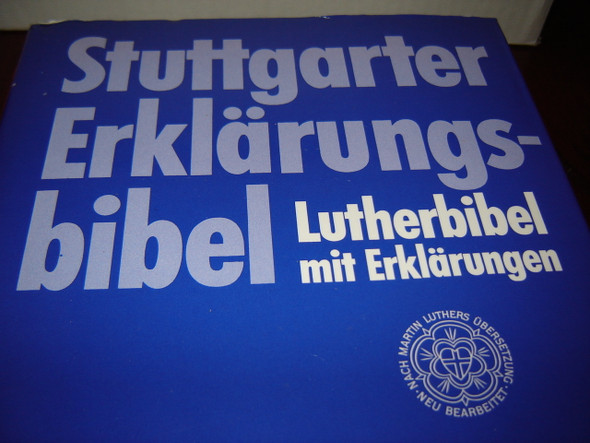Description
Paite Language Holy Bible with Maps, Photos
Historical 1971 Brown Hardcover Bible 83 with Red Edges, Maps, Photos
Laisiangthou: Thukhun Lui Leh Thukhun Thak Kigawm
1971 Edition - Brown Hardcover with Red Edges
by Bible Society in India
1348 Pages
Condition : Used – Very Good
INSIDE in EXCELLENT CONDITION. Cover shows some wear. AS PICTURED! Buy with confidence. ONLY ONE WE HAVE!
Paite is a Kukish language spoken by the Paite people. There are different Paite dialects. There are about 64,000 Paites in India (according to the 2001 census), about 100,000 Paites in Myanmar (2005-2006), and about 89,000 in Thailand and Laos (2014). The language exhibits mutual intelligibility with the other languages of the region including Thadou, Hmar, Vaiphei, Simte, Kom, Gangte and other languages. The name Paite literally means 'Go-people' and can be translated as 'Leavers' , 'Marchers' or 'simply the people who went.'
Paite was influence by a number of languages such as Japanese, Bengali, Hindi, Manipuri, Burmese, Thai and others as the Paite people like to mimick other people (who speak different languages) which also led to the creation of new words.
The Paite spoken in Myanmar and Thailand( also in Laos) is called Paite-Teddim or Paite-Chin and the Paite spoken in India is called Paite-Zomi or Paite-Mizo.
The Paite language is written in the Roman alphabet(there are two types), simplified version of the PauCinHau alphabet, Burmese script and the Thai script.In India, Paite speakers use the Roman alphabet, in Myanmar the Burmese script and PauCinHau alphabet is used and in Thailand and most parts of Southeast Asia, they use the Thai script.
The Paite language was written with a script that is similar to the Burmese alphabet and Meitei mayek and that script is called Tuallai / Paite laimal but is wasn't used since the missionaries came to Colonial India.
The letters Hs and Sh are removed to make the alphabet more simple.
Even though the Paite language is a tonal language, the usage of tones can be neglected and Paite speakers will understand even if you use a flat tone in every word. The tonal indicators are thought to have been removed due to this reason.
Paite literature is written in the Lamjang dialect, which is indistinguishable from the Tedim language while there are some written in other dialects too.
| Paite (ใปเต/ใปเต ปัว) | |
|---|---|
| Paite pau / Paite | |
| Pronunciation | Pai-te pao |
| Native to | Burma, India |
| Ethnicity | Paite |
|
Native speakers
|
64,000 (2001 census)[1] |
|
Sino-Tibetan
|
|
|
Roman alphabet/Latin alphabet, PauChinHau script, Burmese script and Thai script(which is rarely used and not known by most Paite people ) |
|
| Language codes | |
| ISO 639-3 | pck |
| Glottolog | pait1244 |












































